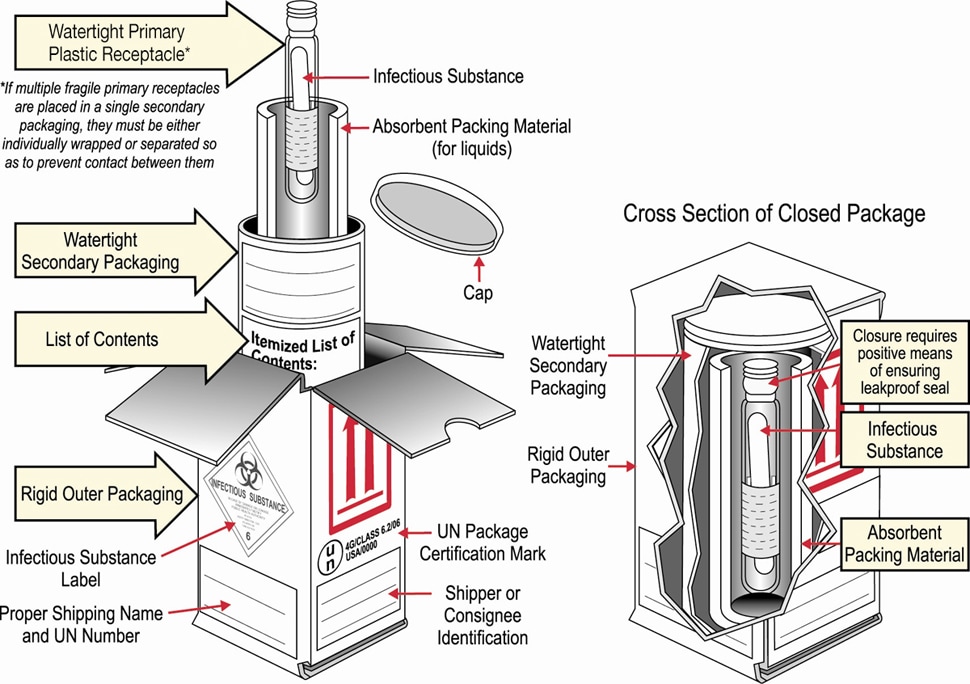Ever order something online, and packaging arrives damaged / torn / opened by the NSA / leaking / broken / or abused???
Just imagine the inside of major sorting package facility, miles of conveyor belts, robots, forklifts, boxes colliding with each other, damaging corners, getting lost, etc. It happens every day, hundreds of millions of packages are sent off to a few select carriers that have a massive, worldwide inventory movement and tracking business that can move packages from point A to point B in the most expedient manner possible. It’s a marvel of logistics, and makes across-town and across-the-continents economies possible.
Now imagine that you are sending biological specimens. Consider that these samples will need to arrive intact, and in the same condition they were sent. Trading cell lines or mice with a collaborator? Requesting an RNAi set? PCR reagents running low? Most of us have seen this type of packaging in the lab; the principles of sending items are generally pretty close to sending packages in the non-scientific world, expect we usually use more dry ice.
There are of course very hazardous agents that move through the mail system, and the US Department of Transportation (DOT) has specific rules to ensure that hazards stay contained, and package handlers are not exposed. Internationally, the WHO, UN, ICAO, and IMO govern safe transportation practices. There are broadly two categories of infectious agent classification that relates to packaging and shipping:
Category A: Capable of causing permanent disability or life threatening or fatal disease in otherwise healthy humans or animals when exposure to it occurs. An exposure occurs when an infectious substance is released outside of its protective packaging, resulting in physical contact with humans or animals. Classification must be based on the known medical history or symptoms of the source patient or animal, endemic local conditions, or professional judgment concerning the individual circumstances of the source human or animal.
Category B: An infectious substance not in a form generally capable of causing permanent disability or life-threatening or fatal disease in otherwise healthy humans or animals when exposure to it occurs. This includes Category B infectious substances transported for diagnostic or investigational purposes.
In general, medical waste is classified as Category B, unless an infectious agent is known to be present. The recent outbreak of Ebola virus and the accompanying medical and diagnostic samples certainly conform to the Category A classification. Below, you’ll see the necessary packaging required for Category A samples:
(1)primary watertight receptacle,
(2) watertight secondary packaging, and
(3) rigid outer packaging.

(from the CDC, http://www.cdc.gov/vhf/ebola/hcp/packaging-diagram.html)
In general, a shipping label for Ebola virus samples will read: “UN 2814, Infectious substances, affecting humans”, which identifies the appropriate UN registry number, and that it is infectious to humans.
For obvious reasons, the suspected organism is not displayed in plain text on the outer label.
Just something to think about as you pick up your mail today.

